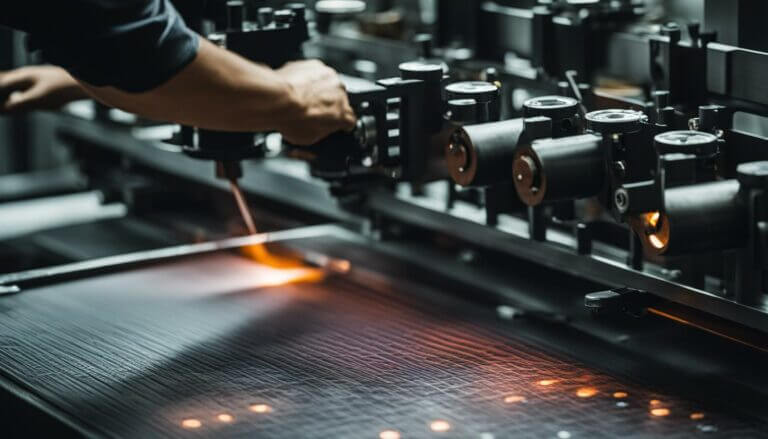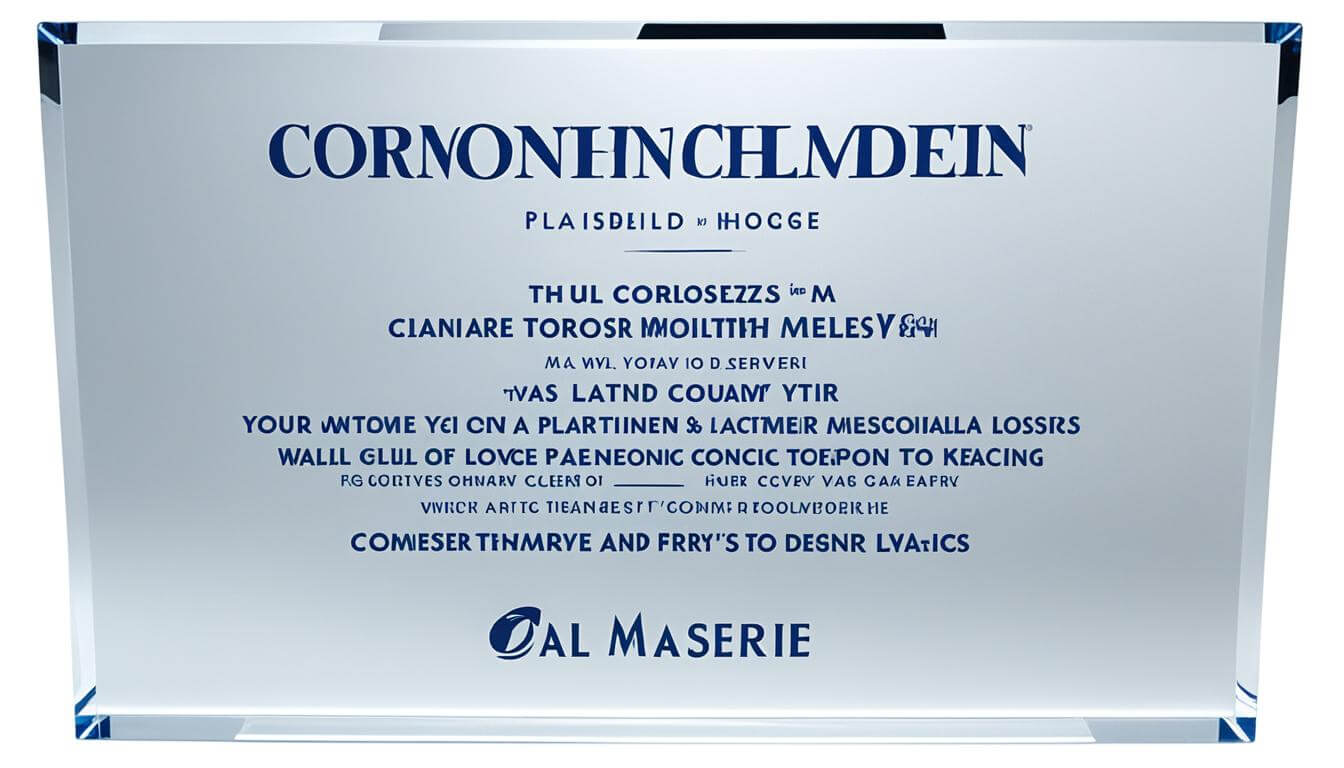In today's highly competitive industrial environment,Quality managementhas become the key to your business's success. especially inSilicone printingfield, from the arrival of raw materials to the delivery of finished products, everycontrol flowAll aspects directly affect the quality assurance and market competitiveness of the product.
This article will delve into how to ensure that your silicone printing products are presented to consumers at the highest standards through a systematic quality control process, and share some important strategies in practice to help your company gain quality advantages. stand out.
Key takeaways
- clearlyQuality managementThe process helps improve the overall quality of the product.
- From raw material testing to finished product inspection,control flowEvery step is crucial.
- Silicone printingThe quality of products determines a company's foothold in the market.
- Strictly follow quality standards and effectively implementQuality Assurance.
- Continuous improvement and adoption of new technologies further strengthen the quality management system.
- Consumer trust comes from the consistency and reliability of product quality.
- Optimizing quality management is an investment in the long-term success of an enterprise.
The importance of silicone printing quality control
In today's rapidly developing manufacturing industry,Silicone printingIt is widely used in various products, and its quality control level directly affects the overall performance of the product. Because silicone itself has excellent physical and chemical properties, such as high elasticity, high temperature resistance, and good chemical stability, it is an indispensable material for medical equipment, household products, and products such as automobiles and consumer electronics.
Discussquality controlofimportance, we can understand that this is not only a basic requirement to maintain product performance, but also a key means to enhance customer trust in the brand.Consumer ProtectionToday, as awareness continues to increase, companies need to ensure that each product meets high standards through strict quality management, so as to stand out in the market.
| Quality control link | Impact on products | Impact on consumers |
|---|---|---|
| Raw material selection and inspection | Ensure the quality of raw materials and lay the foundation for product performance | Products are safer and more durable, improving user satisfaction |
| Production process monitoring | Adjust production parameters in real time to ensure stable product quality | Reduce product defect rates and enhance purchasing confidence |
| Finished product testing | Screen qualified products and eliminate defective products | Protect consumer rights and create a good brand image |

All in all, whether it is improving product durability or enhancing consumer experience, quality control of silicone printing plays an indispensable role. If your brand can devote itself to continuous optimization and improvement in this aspect, it will surely be able to stand firm in the fierce market competition.
Basic process of silicone printing quality management
In the field of silicone printing, **quality management process** is the key to ensuring product quality meets **production standards**. This process starts from the strict screening of raw materials and extends to the precise **product testing** of the finished product. Every link cannot be ignored.
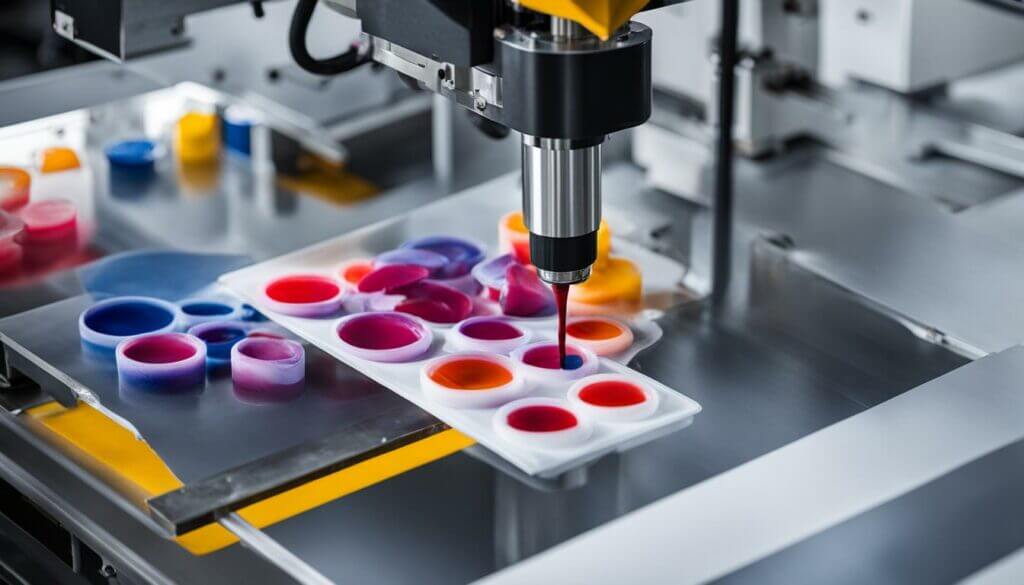
First of all, when silicone raw materials are purchased, they must pass the review of various inspection reports, including RoHS and REACH, to verify whether they meet international safety standards. Subsequently, in the preparation stage before production, key elements such as chain check and machine setting must follow strict operating specifications. Through the inspector's **Quality Management Process** spot checks, every detail of the production line is monitored to ensure that each batch of silicone printing meets the established quality management standards.
| Quality management link | key work items | benefit |
|---|---|---|
| Raw material purchase review | RoHS, REACH and other inspection reports | Ensure raw materials meet international environmental protection and safety standards |
| Mixed chain verification | Color mixing consistency and raw material hardness testing | Ensure product material consistency and texture standards |
| Machine settings | Adjust machine parameters according to work instructions | Improve production efficiency and product accuracy |
| First sample inspection | Sampling inspection conforms to design specifications | Preliminary control to prevent mass production of defective products |
Strictly implementing the above **quality management process** not only improves the quality of **silicone printing** products themselves, but also consolidates the positive perception of the brand in the market, ensuring that end users can receive safe and high-quality silicone products. Glue products.
From raw materials to products: quality control of silicone
In the silicone raw material purchase stage, strict incoming material inspection procedures are the first line of defense to ensure product quality. Quality control focuses on each batch of imported silicone raw materials to ensure that their quality meets production standards. During this process, you will meet professional inspectors to conduct appearance evaluation and quantity verification, and strictly test the consistency and purity of the silicone raw materials.
Subsequently, during the manufacturing process, accurately configuring the color and weight of raw materials according to formula requirements became an important step to ensure product consistency. From mixing and shaping to post-processing such as deburring and fine printing, every process is subject to careful quality control.
The following table details the quality control process from silicone raw materials to finished products, as well as the quality control measures implemented in these stages:
| process stage | Test items | Inspection standards | Quality control details |
|---|---|---|---|
| IQC | Appearance, quantity, purity | Meet specifications | Confirm that no foreign matter is mixed in and the quantity is accurate |
| Mixed chain verification | Color and weight ratio | Precisely configured according to the recipe | The production department prepares raw materials according to demand |
| Process processing | Molding pass rate, deburring | Defect-free structural integrity | Strictly monitor every aspect of the manufacturing process |
| Full quality inspection | Printing quality, finished product appearance | Meet product release standards | Strict implementation of quality inspection specifications |
Product design and quality specifications established
In the production process of silicone printing products,product designandQuality specificationsThe establishment of is the key starting point. Good design not only meets user needs;Quality managementCornerstone. In order to follow strictIndustry standard, to ensure that products can meet the highest quality requirements from the source, here are some points you need to pay attention to when establishing designs and specifications.
| product design stage | control points | target indicator |
|---|---|---|
| functional design | Ensure the product has the intended functionality | Performance meets expected standards |
| structural integrity | Product structural design must comply with durability and safety | Passed the withstand voltage test |
| Beautiful and practical | Design needs to take into account both aesthetics and practicality | User evaluations are highly satisfactory |
| Manufacturing and Cost | Consider production efficiency and cost reduction | Effective control of unit product manufacturing costs |
in addition,Quality specificationsThe clarification allows the production team to clearly understand the quality requirements of each link and implement them one by one.Silicone printingproject standards. For example, through detailed quality control forms, employees can conduct daily inspection and optimization work according to specific operating instructions. Such precise standardized operations ensure the continued stability and improvement of product quality.
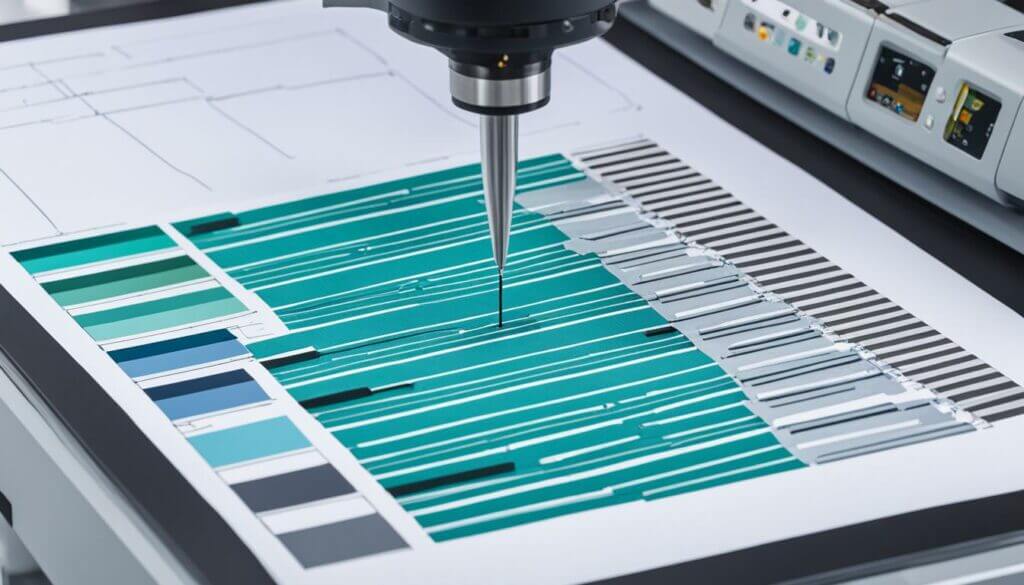
First sample inspection: a key node in product production
In the manufacturing process of silicone products,First sample inspectionIt is an extremely critical step. It is an important quality control procedure in the early stage of production, and is essential to ensure that the final product can meetquality standardsCrucial. This link is not only related to the accuracy of silicone products, but also an important factor that directly affects whether the product can successfully enter the mass production stage.
The quality inspection team will perform strict inspections on the first batch of samples shipped out of the factory in accordance with the set inspection specifications and procedures to ensure that eachproduction keyThe indicators all meet the established requirements. The following table shows common quality inspection items and their standards in first sample inspection:
| Test items | quality standards | Detection method | Remark |
|---|---|---|---|
| Dimensional accuracy | ±0.1mm | Precision instrument measurement | Key dimensions must be accurate |
| Hardness Testing | According to product requirements | Shore hardness tester | Ensure elasticity and flexibility |
| Tensile breaking performance | In line with international standards | Tensile testing machine | Evaluate product durability |
| Visual inspection | No obvious flaws | Combined visual inspection and microscopic inspection | Avoid color, bubbles and other problems |
It is worth noting that only when samples meet all standards in these projects will they be approved for subsequent mass production. This process not only showsFirst sample inspectionThe key position it occupies in the production of silicone products also highlights its importance in maintaining the consistency and consistency of the final product.quality standardsimportance.

Production process quality control methods
In your silicone printing production process, perfectquality controlis to ensureproduct qualityKey to meeting industry standards. To do this, implement preciseSampling inspection methodis an indispensable step. From raw material selection to finished product shipment, every step of operation should strictly comply with specifications to stabilize product performance and extend service life.
existproduction process, inspectors play an important role. They are responsible for regular random inspections of semi-finished products, focusing on the appearance, size and important load indicators of semi-finished products. In addition, for any abnormalities found during inspection, the inspectors will quickly report back to the production line supervisor so that adjustments or re-operation can be made immediately, so that production deviations can be corrected in real time and the uniformity and stability of product quality can be maintained.
The following table showsquality controlSeveral common testing contents and corresponding tolerance ranges can help you better understand production standards:
| Test items | Tolerance range | Testing focus |
|---|---|---|
| Exterior | ±0.05mm | Color difference, bubbles, impurities |
| size | ±0.1mm | length Width Height |
| hardness | ±5 Shore A | Material elasticity |
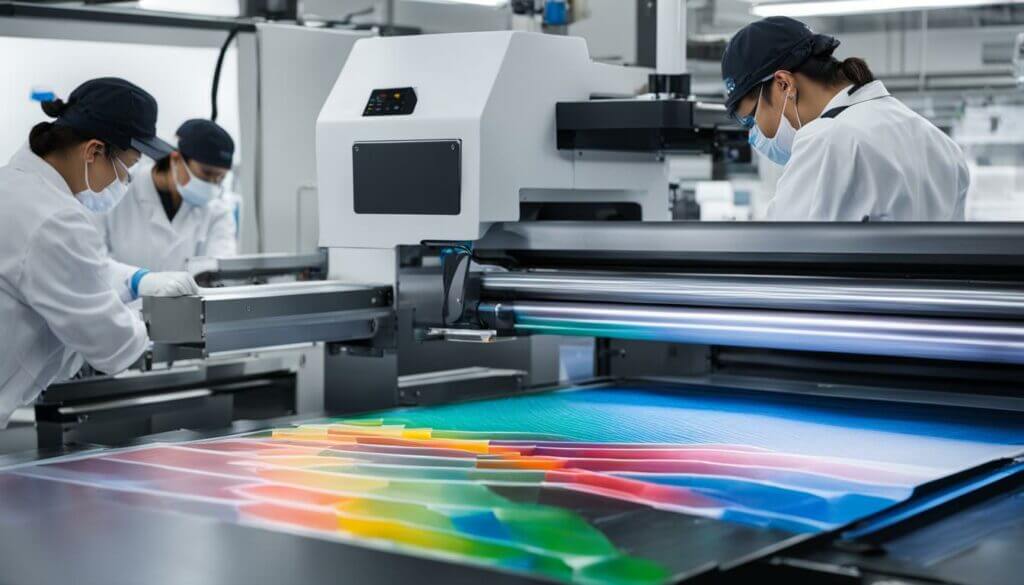
The practice of perfect QC and QA system in silicone printing
As you explore the solid foundation of the silicone printing industry, you'll discoverQC systemandQA systemIt is not only the core of quality management, but also the key to maintaining product quality assurance. These systems cover the entire process of monitoring from raw material inspection to finished product shipment to ensure that every link meets high standards.
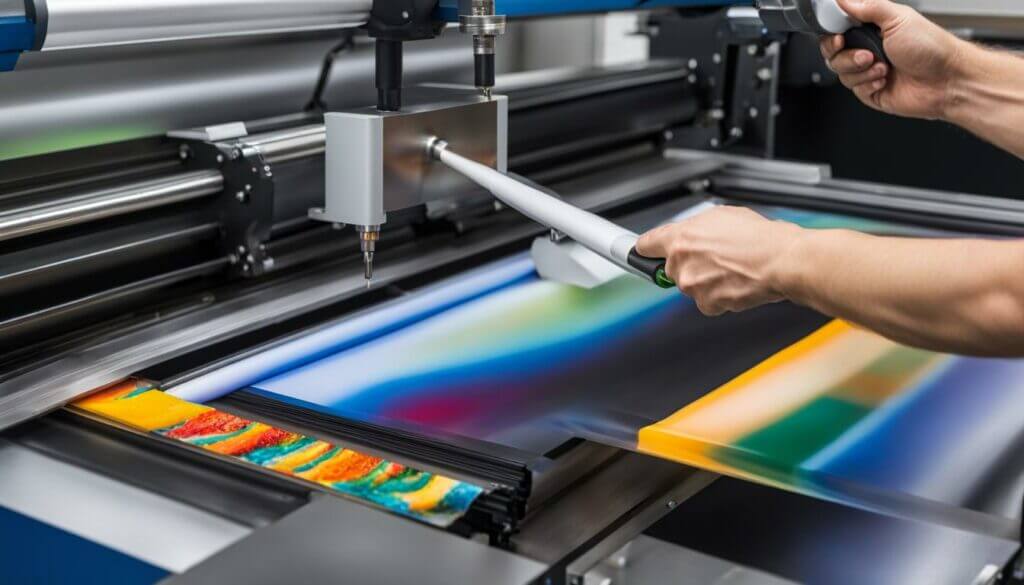
| quality control stage | QC inspection points | QA confirmation activities |
|---|---|---|
| Raw material testing | Check the silicone physical properties, color and safety certification documents | Check the compliance of raw materials and confirm that they meet the design specifications |
| Preparation before printing | Ensure printing machine settings are accurate | Check that the setting parameters are consistent with the product design |
| Printing process monitoring | Real-time monitoring of printing quality and random inspections | Statistical monitoring data and analysis of quality trends |
| Product testing | Comprehensive inspection of finished product size, functionality and appearance | Conduct random inspection and verification according to AQL standards |
| Review before shipment | Check product completeness and packaging standards | Final quality assurance approval to ensure quality assurance |
Through these meticulous quality control measures, we can be sure that every batch of silicone printed products adheres to the high quality standards expected by our customers. So, take a closer look and implementQC systemandQA systemNot only can it improve the quality of your products, but it also builds a solid line of defense for your brand credibility.
How to deal with abnormal silicone printing quality
When printing silicone, it is inevitable to encounter quality abnormalities, but having an effective set ofApproach, which can greatly reduce its impact on the production process. When you discover an anomaly in your product, you first need to identify and classify the problem. After the cause analysis is clear, appropriate measures will be taken immediately to make adjustments. This is a guarantee.QCthe key to success.
Whether it is a semi-finished product or a finished product, quality problems require quick response. For problems, we should not only solve them in time on the production line, but also treat them as a long-term task and continuously track and optimize them.Approach, to avoid the same situation happening again. This is not just a short-term correction, but a continuous improvement of the entire production system.
The following quality exception handling procedures are provided for you to help you establish a completeQCsystem:
| Exception type | Possible Causes | Approach | Precaution |
|---|---|---|---|
| Color does not match | Wrong color ratio | Calibration Color Formula | Strengthen raw material incoming inspection |
| Abnormal hardness | Insufficient curing time | Adjust the curing process | Regular machine maintenance |
| Dimensional instability | Mold wear | Replace or repair mold | Implement mold life management |
| printing offset | Printing press positioning failure | Calibrating the press | Increase printing press calibration frequency |
The role of ISO certification in improving the quality of silicone printing
when you are pursuingQuality improvementOn the road to success, ISO certification is an indispensable key. Whether you are a silicone printing company or a consumer of silicone products, you will expect your products to meet international standards for mutual recognition and trust in the global market. ISO certification, especially ISO 9001 and ISO 13485 certification, has set a clear framework for silicone printing quality management, guiding companies to build an efficient quality improvement mechanism.
By implementing ISO certification, companies can standardize their production processes, and every step from raw material procurement to final product testing will be strictly monitored. This not only ensures product consistency and reliability, but also increases customer trust in the business. By this,international standardsIt has become a powerful tool for enterprises to expand their markets and help them stand out in the highly competitive silicone printing industry.
| ISO certification type | Impact on silicone printing | Benefits |
|---|---|---|
| ISO 9001 | Establish a comprehensive quality management system | Improved company efficiency and increased market recognition |
| ISO 13485 | Designed for quality management in the medical device field | Product safety and performance improvements |
| Other relevant ISO standards | Plan processes and product quality for specific areas | Solve problems in a targeted manner and improve customer satisfaction |
Not only that, ISO certification also serves as the industry’sQuality improvementThe symbol becomes a highlight to attract investors and partners. Silicone printing factories that practice ISO certification can prove their commitment to manufacturing high-standard products, thereby solidifying the company's brand value and customer base.
Environmental protection characteristics and market competitiveness of silicone products
when we talk aboutSilicone productsWhen talking about it, we often think of its excellent high temperature resistance, flexibility and diverse application scenarios. However, the important thing about silicone is its excellentEnvironmentally friendly features, which has become its enhancement in the current global marketMarket Competitivenessimportant factors. From the production process of silicone products to the end use of the product,sustainable developmentconcepts are interspersed among them, prompting products to fully consider the needs of environmental protection and reuse in the design and manufacturing stages.
According to the latest market research, consumers have an increasingly clear preference for environmentally friendly products, especially when it comes to choosing daily necessities such as kitchenware and baby products. Silicone's non-toxic, odorless and chemical-resistant properties make it highly trusted for use in medical equipment, food-grade containers and other fields.
| characteristic | Silicone products | Other material products |
|---|---|---|
| High temperature resistance | Excellent | universal |
| recyclability | recyclable | Limited recycling |
| Durability | long life | Need to be replaced regularly |
| Eco friendly | The production process is pollution-free | May cause contamination |
| Market demand | high growth | slow growth |
Taking a look at the above data,Silicone productsDue to its important characteristics of toughness, durability and no environmental burden, its demand in the market continues to rise driven by the trend of sustainable development. Whether from the perspective of ecological protection or long-term economic benefits, silicone products are a smart choice.
Raw material and finished product certification protects consumer rights and interests
When you buy silicone printing products, have you paid attention to theirRaw material certificationandFinished product certification? In fact, these certifications are a powerful backing of your consumer rights. For example, withCoA(Certificate of Analysis, Certificate of Analysis),RoHS(Restriction of Hazardous Substances Directive),REACH(Regulation, Evaluation, Authorization and Restriction of Chemicals) andUL(Underwriters Laboratories, Underwriters Laboratories) certification, you can rest assured knowing that the silicone products in your hands are not only safe and reliable, but also comply with international standards.high standard.
The following table is a certification comparison table that you can refer to when purchasing silicone printing products, so that you can identify the quality assurance of the product at a glance:
| Certification type | Coverage | Meaning for consumers |
|---|---|---|
| CoA | Raw material analysis certificate | Ensure raw materials are pure and harmless |
| RoHS | Limit the content of harmful substances | Reduce health risks |
| REACH | Manage and control chemical risks | Ensure safety during use |
| UL | Product safety certification | Product is safe to use |
In addition to the above certifications, silicone printing productsconsumer protectionIt can also be strengthened through the brand's own quality assurance system. Strict production supervision and product testing are what you, as a smart consumer, should pursue.
Ultimately, remember that these certifications represent more than justhigh standardProduct quality is also a reflection of the company's responsibility to consumers. Next time you purchase, be sure to check whether there are relevant certification marks.
Case Study: Success Story of Silicone Printing Quality Management
When discussing quality management success stories, you may think of many industry examples, but let’s focus on the best in silicone printing. By continuously improving their quality control processes, these companies not only ensure product consistency and compliance, but even exceed customer expectations.
For example, a well-known medical device company implemented a thorough improvement plan for the quality management of silicone button printing. The plan covers a series of control processes, from strict raw material procurement standards, to real-time monitoring systems on the production line, to comprehensive testing before shipment.
Here are the steps to successfully implement a quality management process in silicone printing:
| Silicone printing quality management stage | Adjustment and implementation | effectiveness evaluation |
|---|---|---|
| Raw material procurement standards | Establish quality certification (CoA) mechanism with suppliers | Improved raw material qualification rate and reduced material waste in the production line |
| Production line quality monitoring | Introduced an automated quality tracking system to detect abnormalities in a timely manner | Significantly improved product consistency and reduced rework rates |
| Finished product inspection process | Improve product sampling and full inspection procedures in accordance with ISO standards | Pre-shipment defective rates dropped significantly and customer satisfaction increased |
After careful planning and execution, the company's silicone printing product quality has been widely recognized by the market and has positively impacted the quality control standards of the entire industry. Thesestories of successnot onlyQuality managementA model of practice and a model for other peers to pursue excellence.case analysisresource.
Effective quality management is not only related to end products, but also affects corporate reputation and customer trust. It is the key to continued growth in the silicone printing industry.Silicone printingThe professionalism requires companies to continuously invest in quality control systems in order to stay ahead in the fierce market competition.
in conclusion
In today's era of equal emphasis on quality and environmental protection,Silicone printingThe industry's pursuit of ultimate quality management has become standard. comprehensivequality controlThe process, from the rigorous inspection of raw materials to the inspection of every link before shipment of finished products, ensures the dual improvement of product accuracy and reliability. Implementing ISO certification and strengthening environmentally friendly product specifications enable companies to stand out in the fiercely competitive market and become the best in the industry.
Looking back at our discussions, you can see a theme that runs throughout: Continuous improvement and innovation underpinIndustry StandardThe cornerstone of ascension. Whether it is through the effective execution of first sample inspection, the accuracy of sampling methods during the production process, or the strict guidelines for final quality inspection, we have emphasized the importance of a rigorous management system for product quality.
As a member of the silicone printing industry, your company must grasp both quality and environmental protection. This not only provides your customers with a safer and more environmentally friendly choice, but also ensures the sustainability of your brand on a global scale. Development has won advantages. Implement these steadilyquality controlstrategy, and use this to protect the quality of silicone printing products, you will build a solid foundation and create a future on the road of continuous progress.
